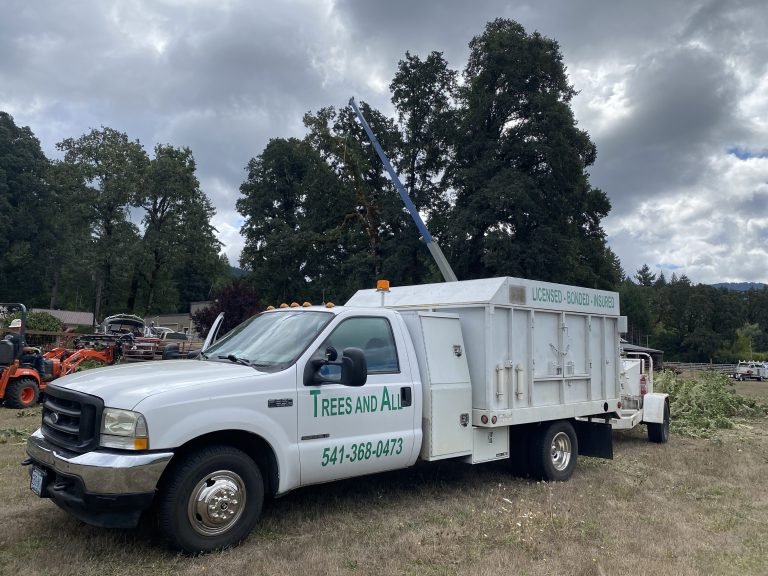How to Deal with Common Tree Diseases: A Guide by Arborists?
Trees are not only beautiful additions to our landscapes but also vital components of our environment. However, like all living things, they can fall prey to diseases that compromise their health and longevity. Understanding how to deal with common tree diseases is essential for effective tree care. In this guide, we’ll explore various tree diseases, their symptoms, and the best practices for managing them, as advised by professional arborists.

Identifying Common Tree Diseases
Dutch Elm Disease
Symptoms:
- Yellowing and wilting of leaves
- Brown streaks in the wood
- Defoliation
Tree Care Tips:
- Remove and destroy infected branches promptly to prevent further spread.
- Utilize fungicides where appropriate to manage the disease.
- Consider tree removal if the infection is widespread to protect other elms in the vicinity.
Oak Wilt
Symptoms:
- Leaf discoloration starting at the leaf margins
- Wilting and premature leaf drop
- Brown streaks in the sapwood
Tree Care Tips:
- Avoid pruning oaks during the growing season to prevent disease spread.
- Use systemic fungicides as a preventative measure.
- Professional tree removal may be necessary for severely affected trees to halt the spread.
Powdery Mildew
Symptoms:
- White, powdery spots on leaves and stems
- Distorted or stunted growth
- Premature leaf drop
Tree Care Tips:
- Improve air circulation by pruning overcrowded branches.
- Apply fungicidal sprays to control the spread.
- Ensure proper watering and fertilization practices to boost tree health.
Anthracnose
Symptoms:
- Sunken, dark spots on fruit, stems, and leaves
- Defoliation in severe cases
- Twig dieback
Tree Care Tips:
- Rake and destroy fallen leaves to reduce the spread of spores.
- Apply appropriate fungicides in early spring to prevent infection.
- Consider tree removal for heavily infected trees to protect the health of nearby vegetation.
Root Rot
Symptoms:
- Wilting and yellowing of leaves
- Poor growth and dieback
- Fungal growth or mushrooms near the tree’s base
Tree Care Tips:
- Improve soil drainage to prevent excess moisture.
- Avoid overwatering and compaction around the root zone.
- Professional tree removal is often the best solution for trees with extensive root rot.
Preventive Tree Care Strategies
Regular Inspections
Conduct regular inspections of your trees to catch early signs of disease. Look for abnormal leaf color, unusual growth patterns, and visible fungal growth. Early detection can prevent minor issues from becoming major problems.
Proper Pruning
Pruning not only shapes your trees but also removes diseased or dead branches. This practice improves air circulation and light penetration, reducing the likelihood of disease. Be sure to use clean, sharp tools to avoid spreading infections.
Adequate Watering and Fertilization
Ensure your trees receive the proper amount of water and nutrients. Overwatering can lead to root rot, while under-watering can stress the tree and make it more susceptible to diseases. Use fertilizers as needed to support healthy growth.
Mulching
Mulch helps control soil temperature and retain moisture. Apply a layer of mulch around the base of your trees, but avoid piling it against the trunk to prevent rot. Mulching also helps suppress weeds that compete for resources.
Professional Tree Care
Employ a certified arborist to look after your trees. Arborists can provide expert advice, diagnose diseases accurately, and recommend appropriate treatments, including tree removal when necessary. Regular professional check-ups can extend the life of your trees.
When Tree Removal is the Best Option
While the goal is to preserve and care for trees, there are situations where tree removal is the best option. Trees that are severely diseased, structurally unsound, or pose a risk to property and safety should be considered for removal. Professional tree removal ensures the process is conducted safely and efficiently, minimizing the risk of damage to surrounding areas.
Benefits of Professional Tree Removal
- Safety: Trained arborists use specialized equipment and techniques to safely remove trees.
- Efficiency: Skilled workers can complete the job promptly and effectively.
- Prevention: Removing infected trees can prevent the spread of disease to healthy trees in your landscape.
Conclusion
Effective tree care involves both preventive measures and timely intervention. By recognizing the symptoms of common tree diseases and implementing the right care strategies, you can keep your trees healthy and vibrant. However, when disease takes hold and threatens the health of your trees and landscape, professional tree removal may be necessary. Consult with a certified arborist to ensure your trees receive the best possible care and attention. Remember, healthy trees contribute to a healthier environment and a more beautiful landscape.
FAQ
How can I identify if my tree is suffering from a fungal infection?
Fungal infections often manifest as spots on leaves, powdery mildew, or mushroom-like growths on the trunk or branches. Black spots, white powder, or clusters of fungi are clear indicators. If you see these signs, it’s best to contact an arborist.
What steps can I take to prevent tree diseases?
To prevent tree diseases, ensure your trees are well-maintained. This includes proper watering, mulching, and pruning. Avoid wounding the tree bark, as it can be an entry point for pathogens. Regularly inspect your trees for early signs of disease.
